Món này tụi mình ăn lần đầu ở Singapore tại quán Song Fa ngay khu Clark Quay, bị ấn tượng và lần nào đến Sing cũng ăn lại món này. Số quán làm món này ở Việt Nam không nhiều, tụi mình có ăn thử vài quán nhưng hầu như đều không ưng, không cảm nhận được hương vị như hồi ăn bên Sing. Founder Bak Kut Teh là quán lâu đời ở Sing, nằm trong chuỗi đàng hoàng nên tụi mình ăn thử xem sao.
Địa chỉ:
Tầng trệt, TTTM RomeA, 117 Nguyễn Đình Chiểu, P. 6, Quận 3, TP. HCM
Sau đây là 1 vài đánh giá của tụi mình:
Vị trí: nằm trong trung tâm thương mại ngay góc ngã 4 Nguyễn Đình Chiểu – Trương Định. Điểm bất lợi là trung tâm thương mại này quá vắng nên quán ít nhiều cũng bị ảnh hưởng. Giữ xe ở tầng hầm, giá 5k, đi lên tầng trệt là thấy quán.
Không gian: quán rộng rãi, sạch sẽ, trong trung tâm thương mại nên máy lạnh mát rượi, thậm chí hơi vắng nên mình thấy hơi bị lạnh quá (với mình). Trên cửa kiếng có dán hình mấy người nổi tiếng (bên Sing) đến ăn tại quán.
Phục vụ:
Món lên không quá nhanh nhưng lên đều, nhân viên dễ thương, phục vụ tốt.
Món ăn:
Tụi mình đi 4 người nên kêu bình trà lớn uống chung. Món này béo, nhiều thịt uống với nước trà dễ tiêu. Nói là bán Bak Kut Teh nhưng mình thấy thực đơn nước uống, tráng miệng ở đây khá là nhiều sự lựa chọn, lạ, món nào nghe cũng muốn thử 1 chút đó.
Mình xin nhận xét chung về món Bak Kut Teh tại đây, nước dùng là giống nhau (nước sườn trà hầm) chỉ khác ở loại thịt thôi. Nước hầm đậm đà, ngọt thanh, thơm, vẫn cảm nhận 1 chút mùi ngai ngái của lòng heo (nhưng không đậm mùi, chỉ 1 chút thôi). Nước này húp vô cảm giác tỉnh táo cả người vì nó ấm, nóng lâu. Hết nước hầm nhân viên sẽ tới châm thêm (miễn phí). Thịt được hầm rục lắm nên mềm, thấm, thơm, chấm thêm chút hắc xì dầu cho tăng hương vị.
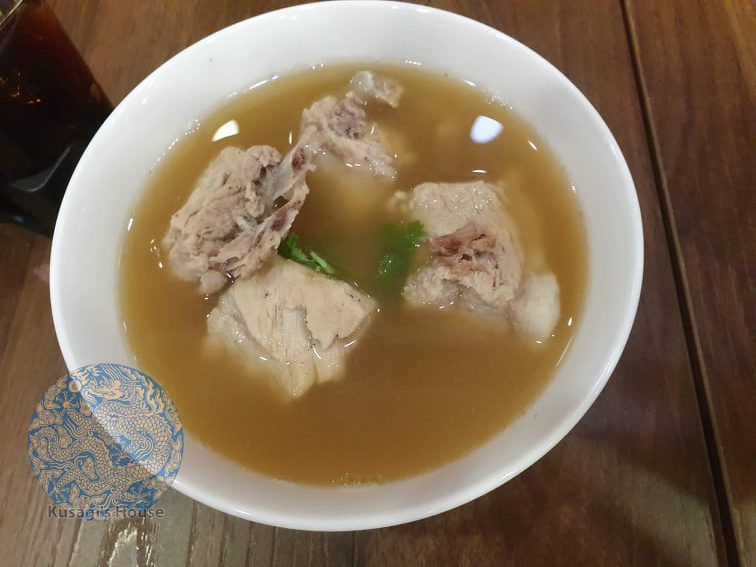
Sườn ngắn đặc biệt – 158k 
Sườn miếng – 118k
Giò heo hầm – size M (Pig Trotter): mềm rục (từ thịt tới da), thơm, đậm đà, thấm gia vị (nhìn màu sắc là thấy thấm lắm luôn), béo nhưng không gây ngán lắm.

Giò heo hầm (M) – 158k 
Sườn cọng đặc biệt – 178k
Cải ngọt sốt dầu hào (Choy Sim with Oyster) & Mì (Vercimelli Noodles Soup): cải xào với tỏi nên thơm mùi tỏi, thấm dầu hào, xào kiểu Hoa dầu nhiều nên hơi ngán chút. Mì sợi mảnh (giống mì chỉ) nhưng dai, nước súp trong mì hơi lạt hơn so với nước súp sườn.
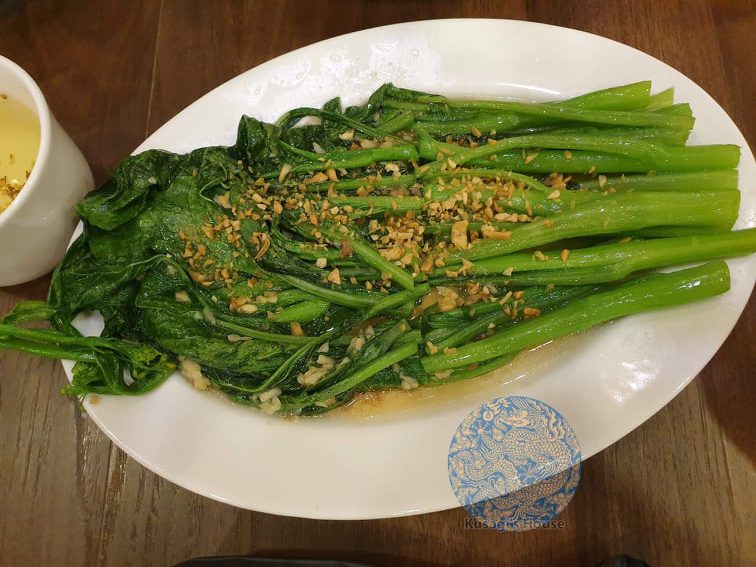
Cải ngọt sốt dầu hào – 58k 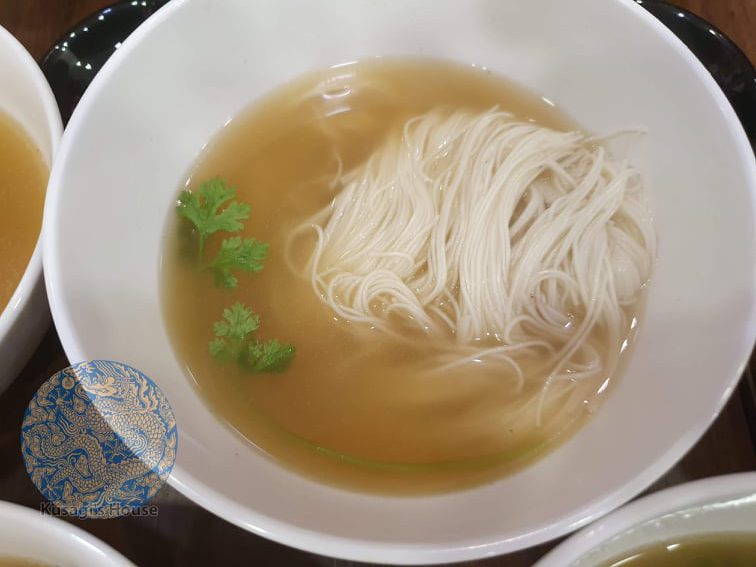
Mì – 16k 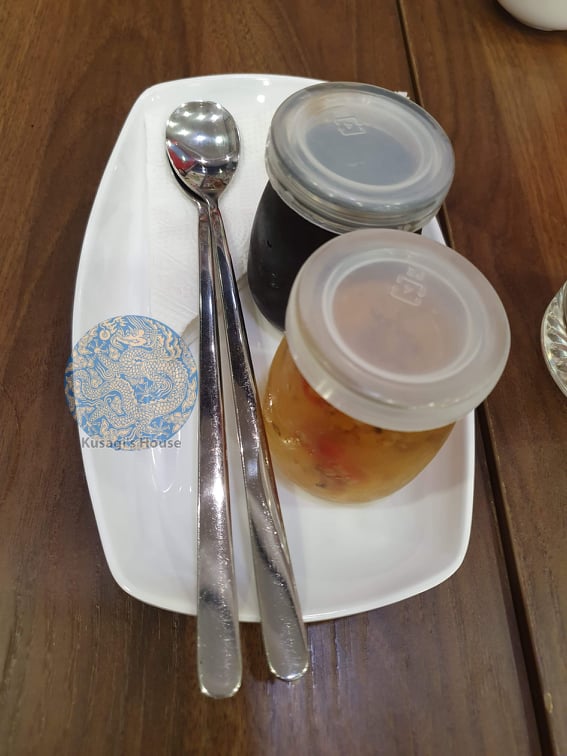
- Bánh quế hoa (Osmathus Royal Jelly): nhìn tên tiếng Anh và món ăn cỡ nào cũng là rau câu, không hiểu sao gọi là bánh. Rau câu ăn mát, thanh, có kỷ tử, bông cúc, thơm.
- Quy linh cao (Qui Ling Gao): món sâm đen của người Hoa, món này ăn cũng mát, vị hơi nhẫn đắng nên ăn kèm mật ong, ở đây làm vị cho dịu đi để dễ ăn rồi.

Điểm trừ: thực ra đối với quán này ở Việt Nam sẽ không có sự so sánh nhiều vì hiện tại mình chưa tìm ra quán bán món này ngon hơn ở VN. Mình có ăn thử quán này bên Sing thì thấy là vị đưa về đây gần như nguyên vẹn, không có khác biệt nhiều. Vì mình ấn tượng với quán Song Fa bên kia nên sẽ có chút sự so sánh như sau:
- Nước súp không ấm và hơi ấm khi húp nước súp ở đây không kéo dài lâu như khi mình ăn ở Song Fa (có lẽ vì bên kia có nhiều tiêu và 1 số gia vị hơn 1 chút)
- Nước chấm cũng là hắc xì dầu pha, mình không chắc hắc xì dầu bên kia có bí quyết hay pha riêng không? Nhưng khi pha hắc xì dầu và giấm chấm rất đậm đà, vừa miệng, mùi nước chấm không quá át miếng sườn. Ở đây phần nước chấm chưa làm được như vậy.
Giá cả: hơi cao, thời điểm tụi mình đi ăn khá là lâu rồi nên không chắc bây giờ còn giá này không, nhất là những tháng gần đây giá thịt heo đang lên cao. Chất lượng thì quá ổn, chưa tìm được quán nào bán món này tại VN ngon. Thiệt hại: ~900k/ 4 người. Giá trên hình/menu chưa bao gồm 10% VAT.
Cảm ơn các bạn đã đọc bài viết. Phía trên là vài nhận xét của mình tại quán này. Hẹn gặp các bạn ở bài review tiếp theo. Mùa này hàng quán đóng cửa nhiều, chủ yếu chỉ còn delivery, sức khoẻ và sự an toàn của bản thân và cộng đồng vẫn là trên hết. Mọi người giữ gìn sức khoẻ, cố gắng vượt qua đại dịch này 🙂
Usagi

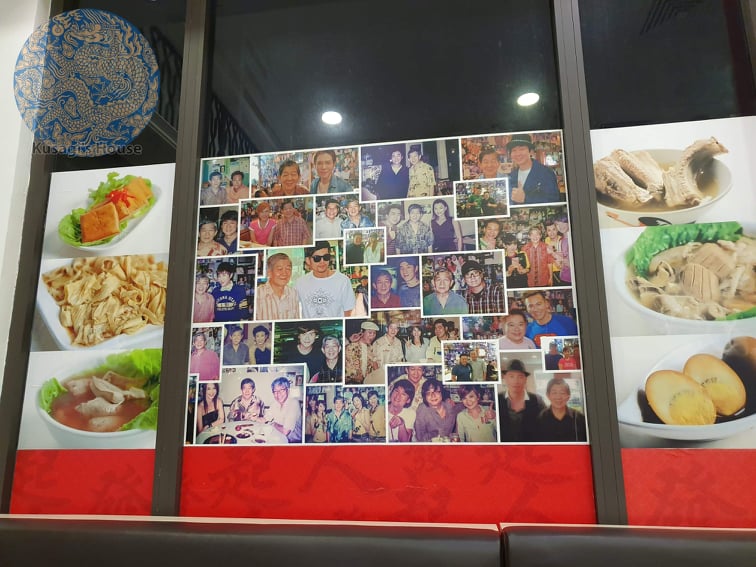
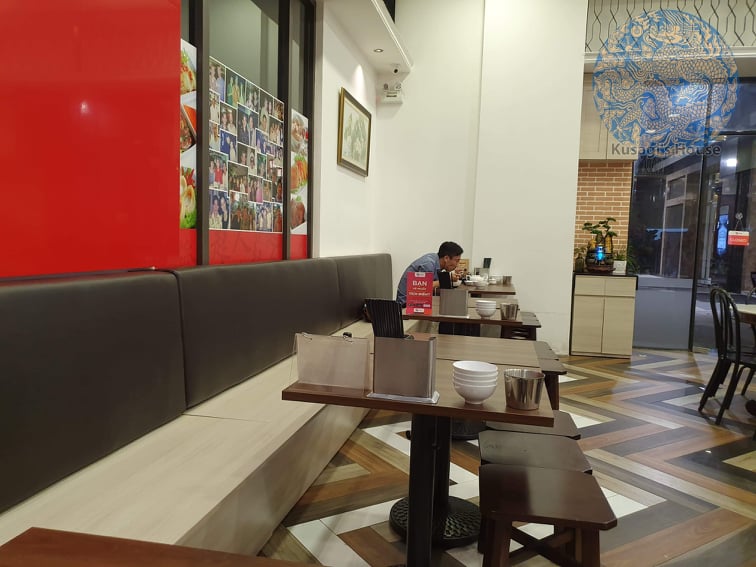
PharmaConnectUSA: PharmaConnectUSA – Pharma Connect USA
mometasone online pharmacy: Pharma Connect USA – Pharma Connect USA
medicijnen online MedicijnPunt online apotheek nederland met recept
https://medicijnpunt.com/# MedicijnPunt
https://pharmajetzt.shop/# wegovy online apotheke
Deep below the surface of the ground in one of the driest parts of the country, there is a looming problem: The water is running out — but not the kind that fills lakes, streams and reservoirs.
kraken даркнет
The amount of groundwater that has been pumped out of the Colorado River Basin since 2003 is enough to fill Lake Mead, researchers report in a study published earlier this week. Most of that water was used to irrigate fields of alfalfa and vegetables grown in the desert Southwest.
No one knows exactly how much is left, but the study, published in the journal Geophysical Research Letters, shows an alarming rate of withdrawal of a vital water source for a region that could also see its supply of Colorado River water shrink.
“We’re using it faster and faster,” said Jay Famiglietti, an Arizona State University professor and the study’s senior author.
In the past two decades, groundwater basins – or large, underground aquifers – lost more than twice the amount of water that was taken out of major surface reservoirs, Famiglietti’s team found, like Mead and Lake Powell, which themselves have seen water levels crash.
The Arizona State University research team measured more than two decades of NASA satellite observations and used land modeling to trace how groundwater tables in the Colorado River basin were dwindling. The team focused mostly on Arizona, a state that is particularly vulnerable to future cutbacks on the Colorado River.
Groundwater makes up about 35% of the total water supply for Arizona, said Sarah Porter, director of the Kyl Center for Water Policy at Arizona State University, who was not directly involved in the study.
The study found groundwater tables in the Lower Colorado River basin, and Arizona in particular, have declined significantly in the last decade. The problem is especially pronounced in Arizona’s rural areas, many of which don’t have groundwater regulations, and little backup supply from rivers. With wells in rural Arizona increasingly running dry, farmers and homeowners now drill thousands of feet into the ground to access water.
Scientists don’t know exactly how much groundwater is left in Arizona, Famiglietti added, but the signs are troubling.
“We have seen dry stream beds for decades,” he said. “That’s an indication that the connection between groundwater and rivers has been lost.”
propranolol target pharmacy: online otc pharmacy – buy generic viagra online
PharmaJetzt: Pharma Jetzt – PharmaJetzt
https://pharmaconfiance.shop/# Pharma Confiance
shop apotheke germany Pharma Jetzt medikamente shop apotheke
online apotheek gratis verzending: MedicijnPunt – Medicijn Punt
Deep below the surface of the ground in one of the driest parts of the country, there is a looming problem: The water is running out — but not the kind that fills lakes, streams and reservoirs.
kraken зеркало
The amount of groundwater that has been pumped out of the Colorado River Basin since 2003 is enough to fill Lake Mead, researchers report in a study published earlier this week. Most of that water was used to irrigate fields of alfalfa and vegetables grown in the desert Southwest.
No one knows exactly how much is left, but the study, published in the journal Geophysical Research Letters, shows an alarming rate of withdrawal of a vital water source for a region that could also see its supply of Colorado River water shrink.
“We’re using it faster and faster,” said Jay Famiglietti, an Arizona State University professor and the study’s senior author.
In the past two decades, groundwater basins – or large, underground aquifers – lost more than twice the amount of water that was taken out of major surface reservoirs, Famiglietti’s team found, like Mead and Lake Powell, which themselves have seen water levels crash.
The Arizona State University research team measured more than two decades of NASA satellite observations and used land modeling to trace how groundwater tables in the Colorado River basin were dwindling. The team focused mostly on Arizona, a state that is particularly vulnerable to future cutbacks on the Colorado River.
Groundwater makes up about 35% of the total water supply for Arizona, said Sarah Porter, director of the Kyl Center for Water Policy at Arizona State University, who was not directly involved in the study.
The study found groundwater tables in the Lower Colorado River basin, and Arizona in particular, have declined significantly in the last decade. The problem is especially pronounced in Arizona’s rural areas, many of which don’t have groundwater regulations, and little backup supply from rivers. With wells in rural Arizona increasingly running dry, farmers and homeowners now drill thousands of feet into the ground to access water.
Scientists don’t know exactly how much groundwater is left in Arizona, Famiglietti added, but the signs are troubling.
“We have seen dry stream beds for decades,” he said. “That’s an indication that the connection between groundwater and rivers has been lost.”
https://pharmaconfiance.com/# Pharma Confiance
Great write-up, I am a big believer in placing comments on sites to inform the blog writers know that they’ve added something advantageous to the world wide web!
The post is absolutely great! Lots of great info and inspiration, both of which we all need! Also like to admire the time and effort you put into your blog and detailed information you offer! I will bookmark your website!
http://pharmajetzt.com/# PharmaJetzt
https://pharmaconnectusa.shop/# buy viagra boots pharmacy
https://medicijnpunt.com/# apteka internetowa nl
https://x.com/ThomasCeja4/status/1936347955277279237
MedicijnPunt mijn apotheek medicijnen MedicijnPunt